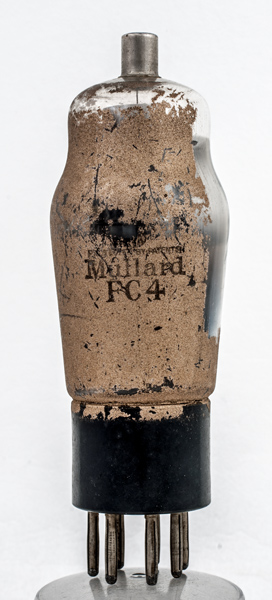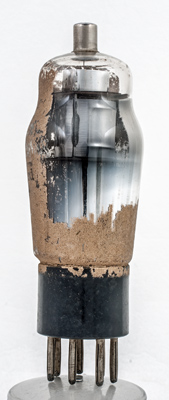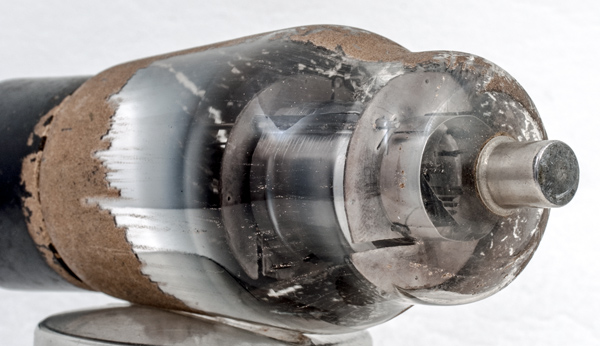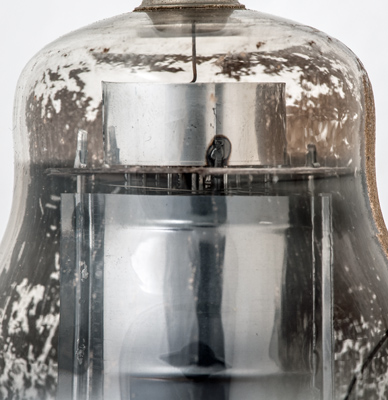|
FC4Sensibly equivalent¶ to:See also:
|
|
|

|
The FC4 from Mullard was the first British produced Octode. It was first made commercially in 1934.The FC4 is a self oscillating mixer for frequency changing in radio superhet receivers. The oscillator has to generate 12 Volts peak to peak for correct operation. It would typically have used a 90 Volt oscillator anode voltage and up to 2.0 mA anode current. The oscillator would use g1 as control grid and g2 as anode. Of the six grids the final one was a suppressor, g3 and g5 would be screen grids, and the signal would be applied to g4, hence its position as top cap connection.
This exhibit had started to shed the metallic paint screen and further removal revealed the inner structure. The octode is housed within a cylindrical anode that is mounted high in the envelope.
The grids have small spacings in between them.
The tops of some of the wire grids can be seen in this image. The supports for g4 are at right angles to the other grids. Of the two supports for g4 one has the connection to the top cap and the other has a large heat sink fin. The cathode is cylindrical and the supports for g2 are not notched. G2, the oscillator anode, is made of just the two vertical rods.The classic envelope is 45 mm in diameter and, excluding the B7 base pins, is 116 mm tall.References: Data-sheet, 4024 & 1043. Type FC4 was first introduced in 1934. See also 1934 adverts. |
Pin Connections
| 1 | 2 | 3 | 4 | 5 | 6 | 7 | tc |  g2 | g1 | g3,g5 | h | h | m,k | a | g4 |
|
|
Absolute Maximum Operating Conditions¶
| Vh | Ah | Va | Vs | Vg | mAa | mAs | gm | 
| 4.0 | 0.65 | 250 | 70 | -1.5 | 1.6 | 3.8 | 0.6 |
|
PDF scanned from an original document held by the museum |
Updated May 09, 2023.
|
|